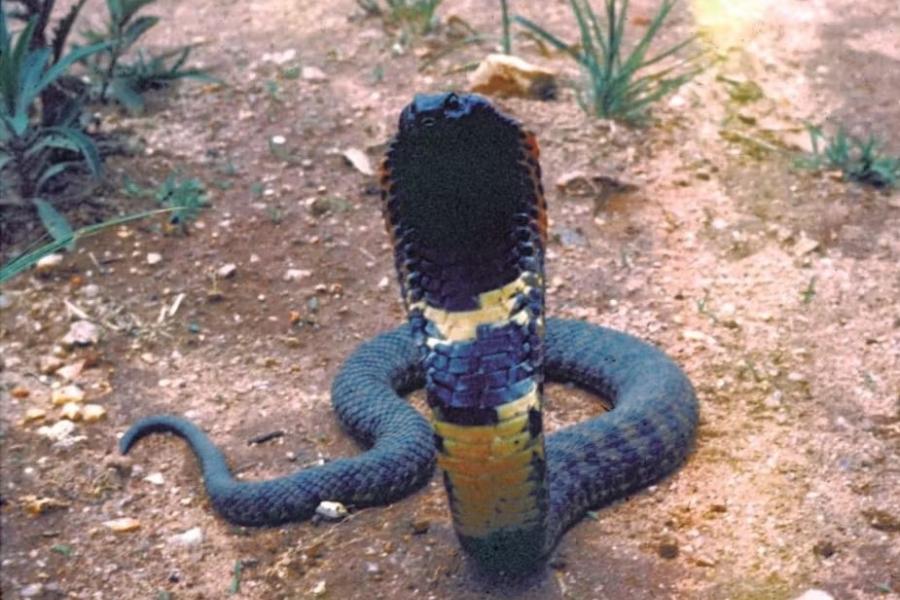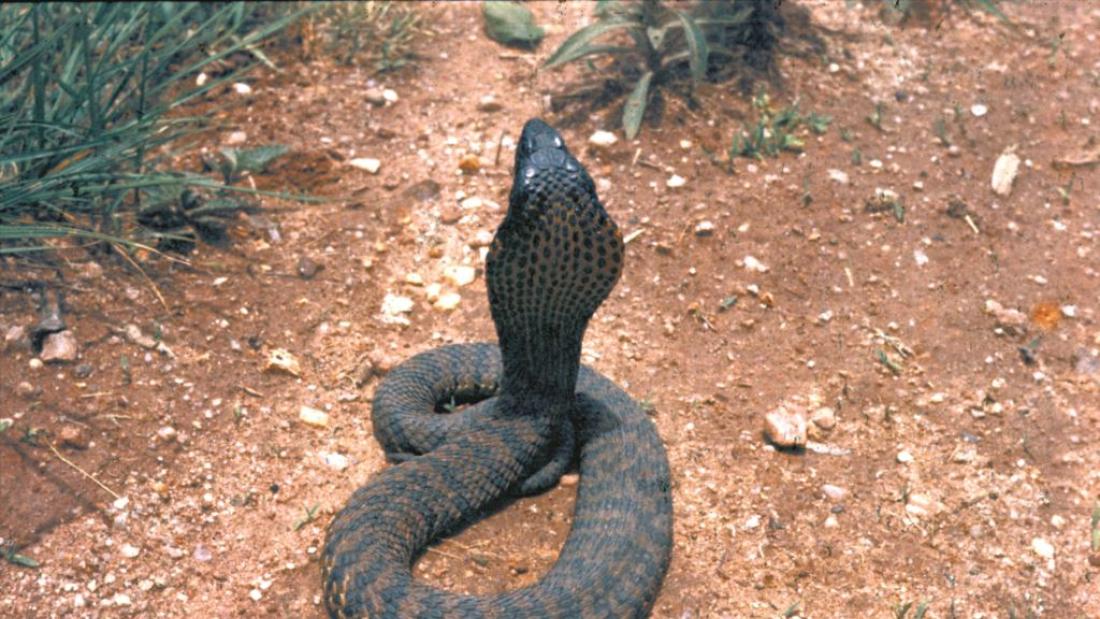The world’s natural history museums hold a treasure trove of knowledge about Earth's animals. But much of the precious information has been sealed off to geneticists because formalin, the chemical often used to preserve specimens, damages DNA and makes sequences hard to recover.
Harnessing recent advances in DNA extraction techniques, a team including members from Bangor, Potsdam, and Cambridge Universities, along with collaborators in South Africa and Zimbabwe, have extracted the genetic code of a museum specimen, and identified a new species of snake.
The new species, from the Eastern Highlands of Zimbabwe has been named as the Nyanga rinkhals, or Hemachatus nyangensis in a paper published in PLOS One.
The Eastern Highlands of Zimbabwe and surrounding savannas and dry forest, are home to many species found nowhere else. Here, a mysterious population of snakes with unusual markings first drew the attention of scientists in the 1920s. The snake displaying a cobra-like defensive hooding posture was spotted in the grounds of Cecil Rhodes’ Inyanga Estate in Nyanga.
The Nyanga rinkhals


When animals go extinct, we don't just lose a species
In 1961, the late renowned herpetoloist Donald G. Broadley identified the population as belonging to the rinkhals (Hemachatus haemachatus), whose other nearest populations were found some 700km away in South Africa, Eswatini (formerly known as Swaziland) and Lesotho.
A handful of specimens of Zimbabwe rinkhals were observed and measured in later years but the landscape has been drastically altered by forestry. The particular specimen studied here was run over in 1982. None have been seen in the wild since 1988, and the population species is feared to be extinct.
Tom Major, who was a PhD student at Bangor University led the work and explains:
“Our study showed that this is a long-isolated population, highly distinct from the southern rinkhals populations. Based on their genetic differences, we estimate that the snakes in Zimbabwe diverged from their southern relatives approximately seven to 14 million years ago.
The Nyanga rinkhals has fangs modified to spit venom. Some of the closely related true cobras are known to spit venom toward animals that are threatening them, using the same specialised fangs.
Venom spitting appears to have evolved three times within the broader group of cobra-like snakes, probably as a defence mechanism in response to the first hominins (our ancestors). Tool-using apes who walked upright would have posed a serious threat to the snakes, and the evolution of spitting in African cobras roughly coincides with when hominins split from chimpanzees and bonobos seven million years ago.”
Co-author Wolfgang Wüster, Professor in Zoology at Bangor University added:
“If a living population of Nyanga rinkhals was found, fresh DNA samples would help us to more accurately determine the timing of the split between the two species of rinkhals and how this compares to hominin evolution."
“Technological advances may be giving us incredible insights into ancient animal lineages but they can't make up for an extinction. We still hope a living population of Nyanga rinkhals will be found”.
The possible relationship between venom spitting and our early ancestors is a reminder that we are part of the Earth's ecosystem. Our own evolution is intertwined with that of other animals. When animals go extinct, we don't just lose a species - they take part of our own history with them.





